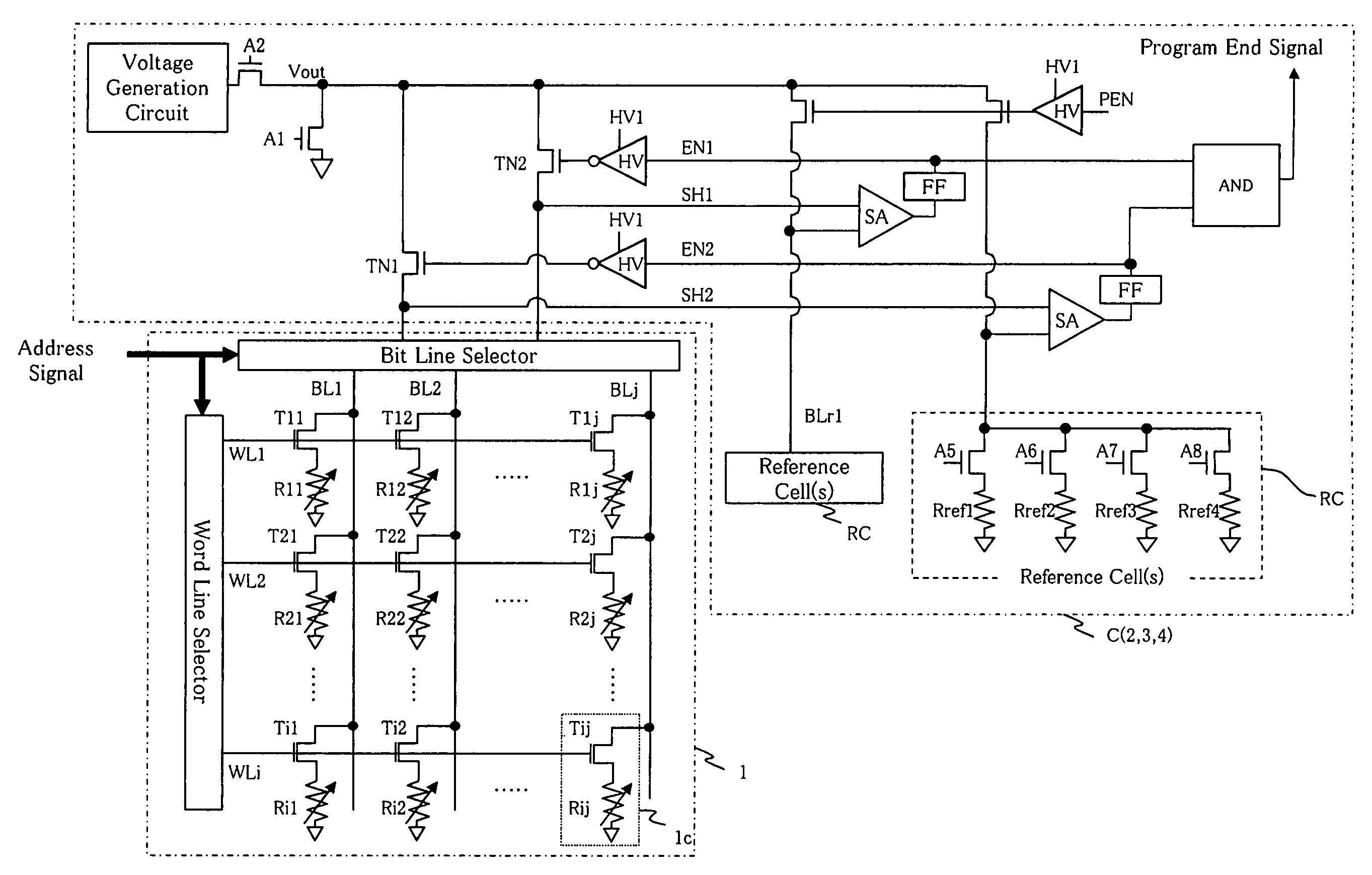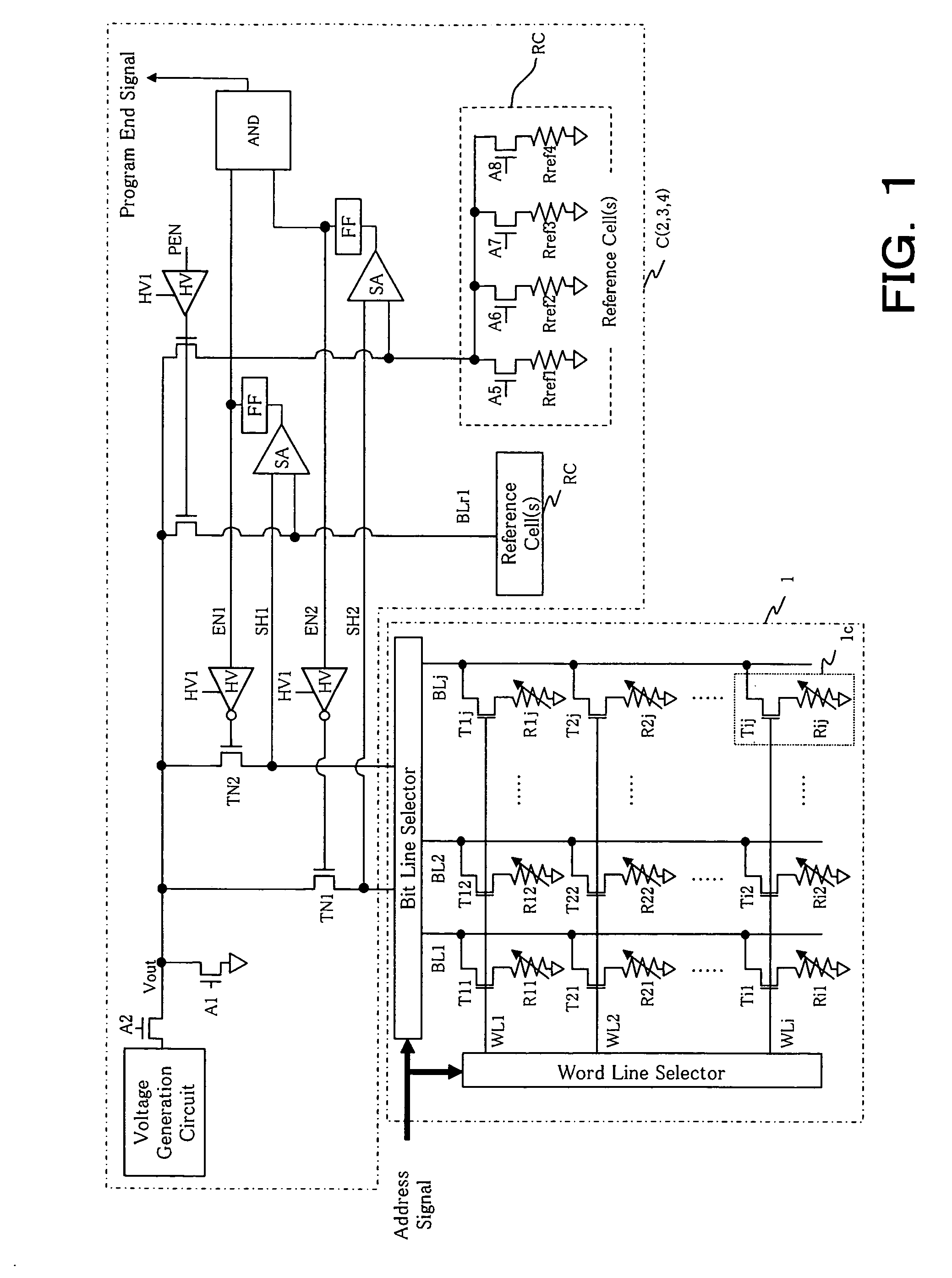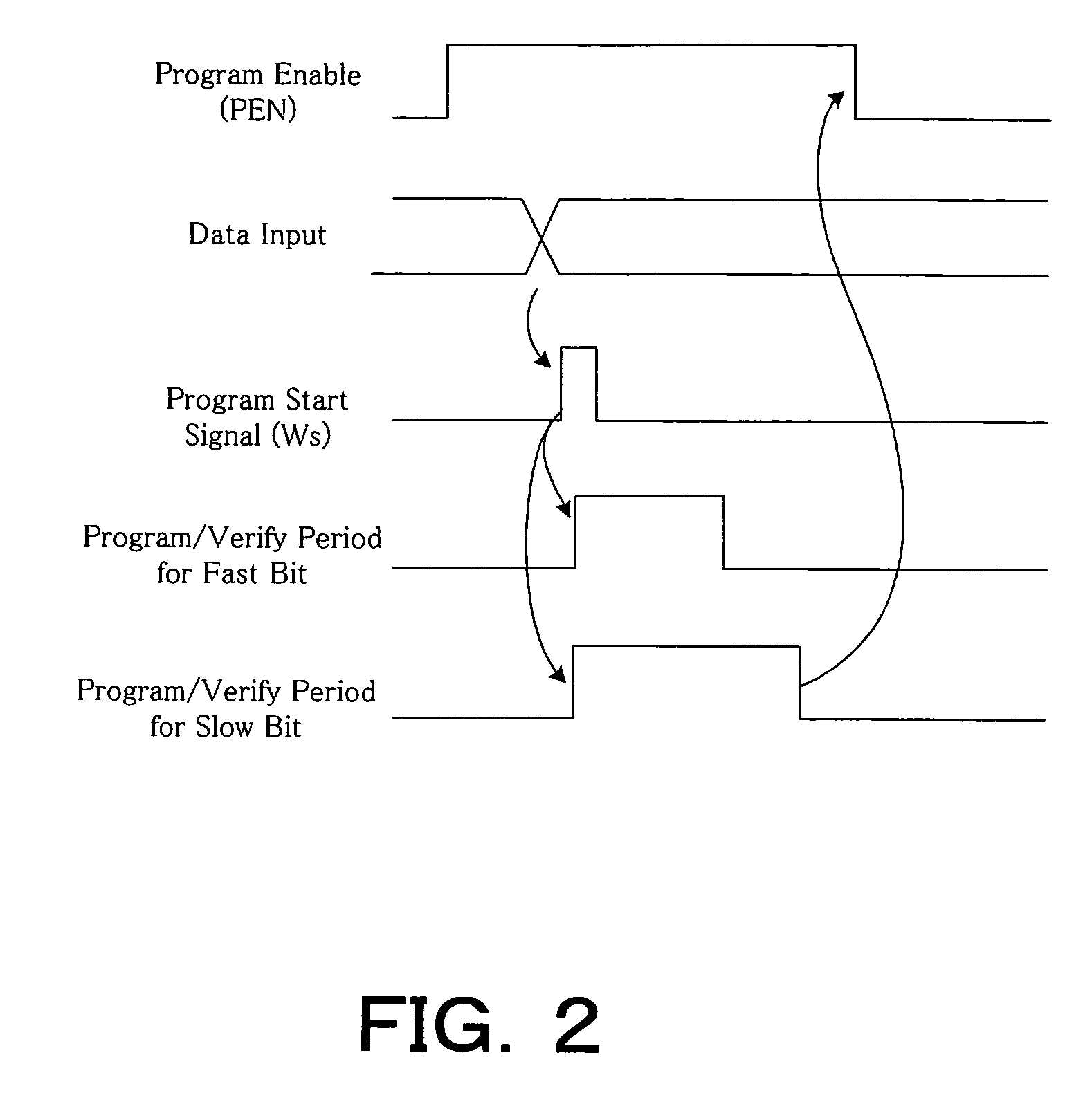Semiconductor memory device and method for programming and erasing a memory cell
a memory cell and memory technology, applied in the field of memory cell programming and erasing methods, can solve the problems of difficult programming of memory cells, threshold voltage exceeding tolerance, and difficulty in containing the threshold voltage range after, so as to shorten the time required for programming processing
- Summary
- Abstract
- Description
- Claims
- Application Information
AI Technical Summary
Benefits of technology
Problems solved by technology
Method used
Image
Examples
fourth embodiment
[0063]Next, a fourth embodiment will be explained. FIG. 8 shows one example of a circuit structure having both programming circuit and erasing circuit. Here, a programming circuit All located closer to the bit line selector is added in addition to tan erasing circuit Al0(C′) as a control circuit located closer to the source line selector shown in FIG. 7.
[0064]At the time of programming operation, the program enable signal PEN is brought into high level and the erasing enable signal ERSEN is brought into low level, voltage is supplied to the bit line side, the source line side becomes the ground level and the programming operation is carried out. At that time, control is made such that column switches TN3 and TN4 on the side of the source line become ON state. At the time of erasing operation, the program enable signal PEN is brought into low level, the erasing enable signal ERSEN is brought into high level, voltage is supplied to the source line side, the bit line side becomes the g...
fifth embodiment
[0065]However, in the example shown in FIG. 8, the programming circuit and the erasing circuit require the voltage generating circuit and the sense amplifier, respectively, but if one element can function as both the voltage generating circuit and the sense amplifier, the area can be reduced. This example is shown in FIG. 9 as a This embodiment selects whether the output Vout of the voltage generating circuit should be supplied to the bit line side or source line side by switching the N type MOSFET, and the programming and erasing operations are carried out.
[0066]At the time of programming operation, the program enable signal PEN is brought into high level, and the erasing enable signal ERSEN is brought into low level, the output Vout is supplied to the voltage generating circuit on the bit line side, the source side becomes the ground level and the programming operation is carried out. At the time of erasing operation, the program enable signal PEN is brought into low level, the e...
PUM
 Login to View More
Login to View More Abstract
Description
Claims
Application Information
 Login to View More
Login to View More - R&D
- Intellectual Property
- Life Sciences
- Materials
- Tech Scout
- Unparalleled Data Quality
- Higher Quality Content
- 60% Fewer Hallucinations
Browse by: Latest US Patents, China's latest patents, Technical Efficacy Thesaurus, Application Domain, Technology Topic, Popular Technical Reports.
© 2025 PatSnap. All rights reserved.Legal|Privacy policy|Modern Slavery Act Transparency Statement|Sitemap|About US| Contact US: help@patsnap.com



